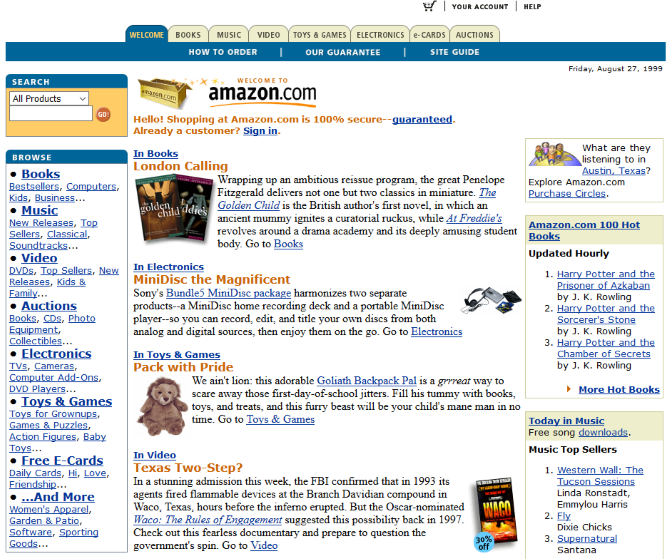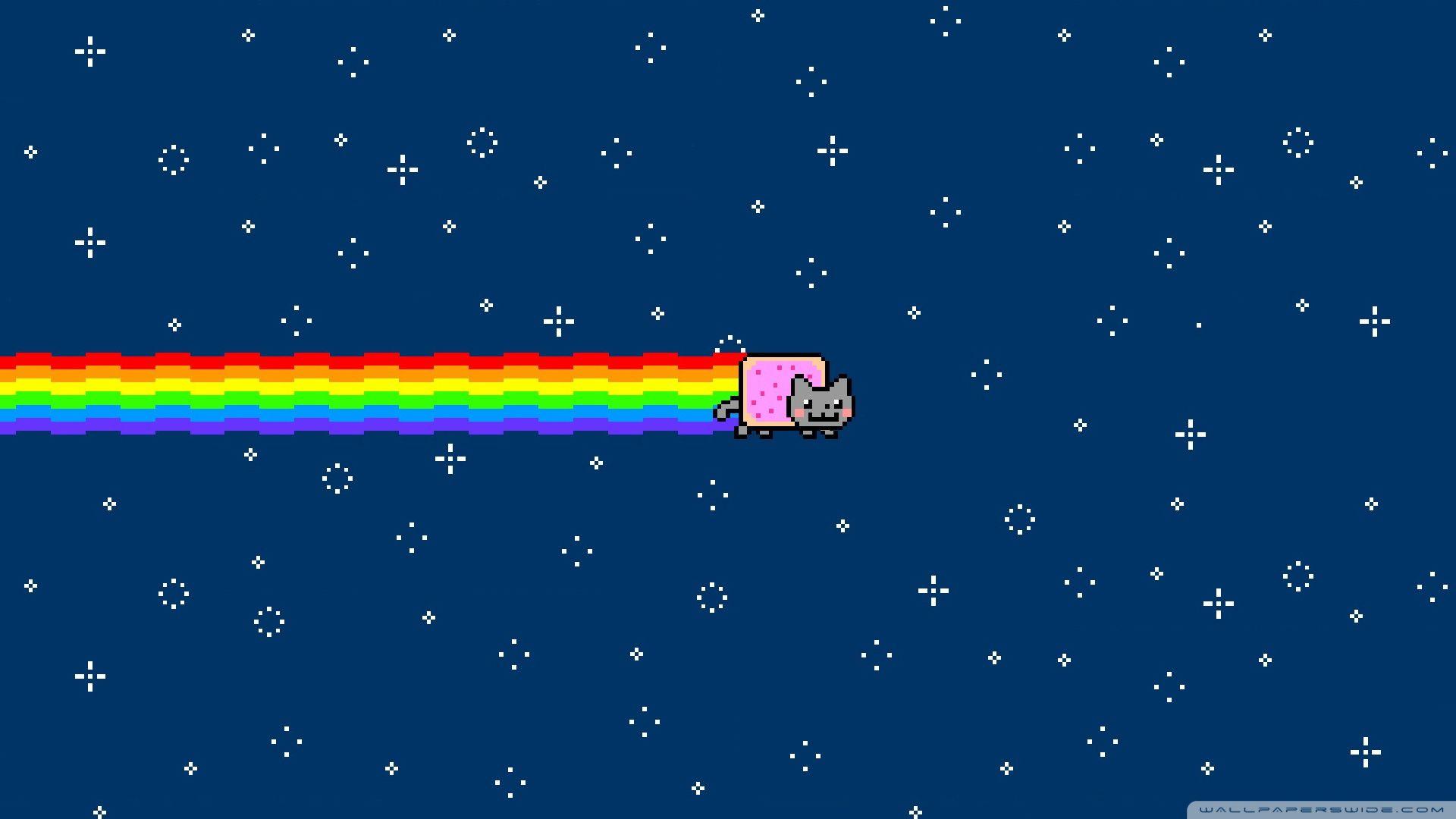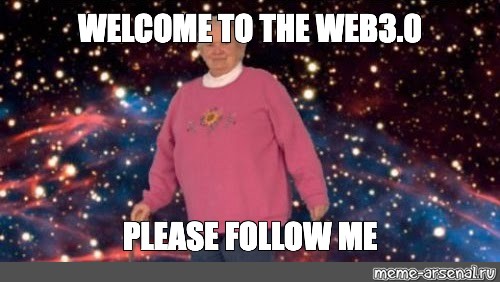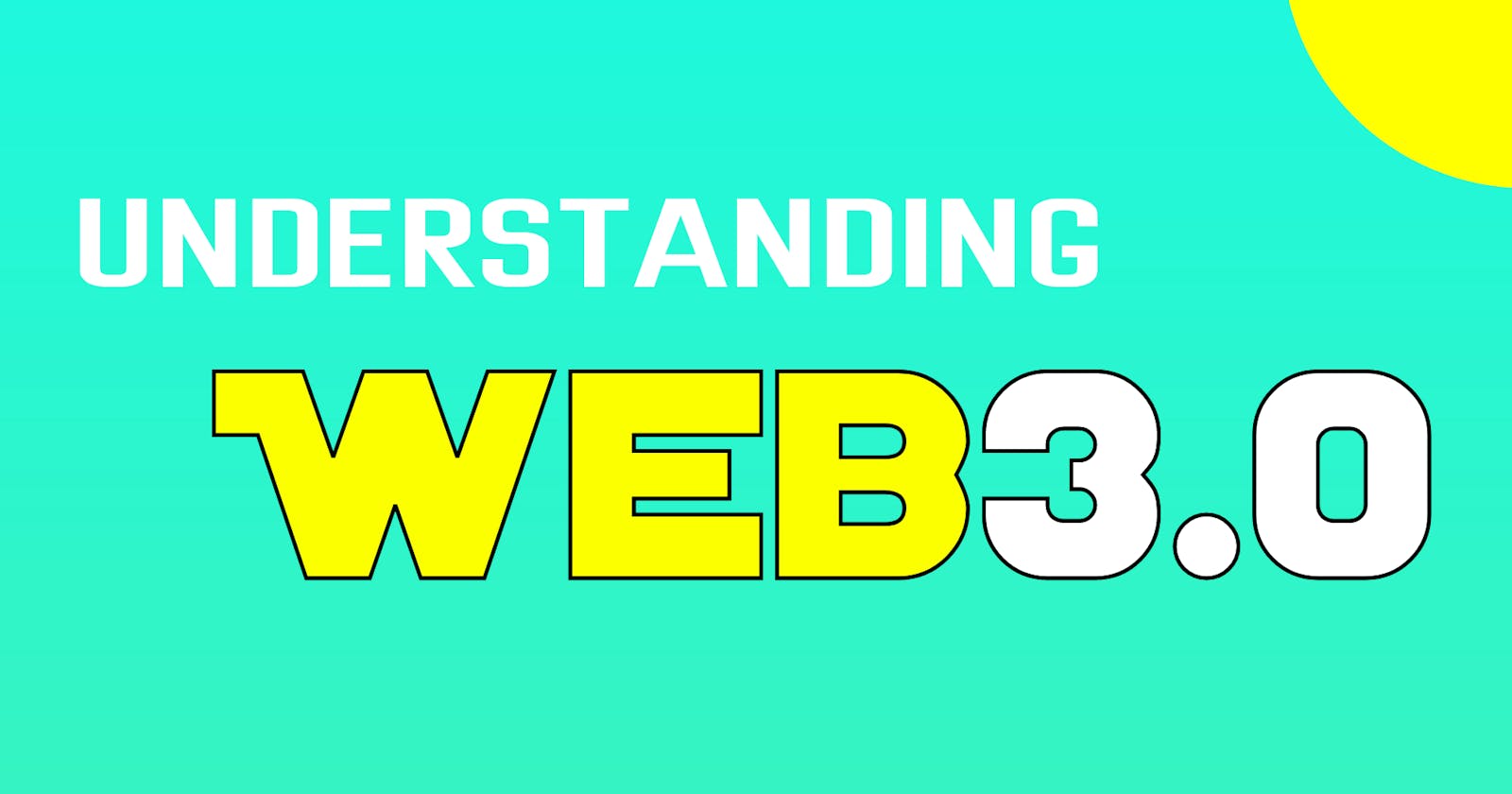What the Heck Is Web3?
In-depth knowledge of Web3, its technologies, and how it will change the world as we know it
You guys really showed interest in my other web3 article so I've decided to come back with an even in-depth blog post that further explains web3, its predecessors, and the history of the web. I'll be writing ✍ at least one article every week so watch out for more content 🎉
The problem
The Internet right now is not the safest place to be, unless you are that one person on earth who doesn't give a crap about his/her privacy. And just like me, I know you are not that kind person. So think about this for a sec:
- What if incognito browsing isn't 100% as safe and private as almost all web browsers claim?
- We are shown personalized content at the cost of our private data.
- What if social media platforms keep our passwords?
- How do we stay anonymous on the Internet?
Do you often have similar thoughts? Well, brace yourself because there's big news 📢. You'll find out towards the end of this article. But before that let's understand some important terms which will be used very often in this article.
Centralized: being controlled or managed by a single entity/authority or is managed in one place.
Decentralised: it means to be controlled or managed by several different authorities.
The idea💡
If there's a web3, then there must be a web2 and a web1. So what exactly are these different versions of the web? What are their origins? Why were they created? It seems I talk too much for an introvert so let's go straight to the point 😅
🔥 Web1.0
In the beginning, the Internet was born. So it's the year 1991, and at this point, the Internet is just in its infancy. It was only comprised of static HTML websites (meaning, the content on the website couldn't change unless the code for the website was manually changed and re-uploaded to the hosting service). Most of these sites were for businesses where they advertise their products and services, personal websites, Informational websites, and other cryptic sites with awkward photos of Arnold Schwazenegger. For eCommerce sites, the goal was to present products to potential customers.
Since the gods of UI and UX design weren't created at the time, websites looked like trash 😅. Inappropriate color gradients, box shadows that looked like they came from the bowels of hell, and thick-stroked table borders were the design trend. There were only a few content creators at this time and most of these static websites were hosted on ISP-run web servers or on a free web hosting service. Some were hosted on the developer's personal computer and were only accessible by knowing the computer's resource path and IP address.

👆🏻 Amazon at the time of web1.0
Main characteristics of Web1.0
- Static web pages.
- Web forms.
- Directories.
- Mostly read-only.
- Banner advertising.
- Frames and tables were used to position and align the elements on a page.
- Content served from the server's file system.
- Pages built using Server Side Includes or Common Gateway Interface (CGI).
Web1.0 lasted roughly between 1991 to 2004
Web1.0 was basically Decentralised since the developers had complete control over their web content. Developers back then could take down the website or change the content of the site as and when they want. The Internet was termed "read-only" because the content was mostly consumed than created. Meaning, people mostly visited websites just to consume but not to share content. Websites were not visited multiple times because the content often was just the same and would still stay that way for years and probably for the entire lifetime of the website as long as it was running on the web1.0 infrastructure. Also, users could not interact with the content of websites in any way.
The Internet at this time was termed "read-only web" according to Berners-Lee
🔥 Web2.0
At this point, the web is a teenager who stays in his mom's basement playing Minecraft with his online friends. We are currently operating on this version of the internet, aka Web2. And as we know today, the internet is dominated by lots of companies that provide personalized services and advertisements in exchange for our personal data. That's technically all that's web2 is. Even though this version of the internet isn't safe, I really feel bad for all those who went through the web1.0 hell. The Internet must've been very boring back then 😅. I can't imagine the world without YouTube, WhatsApp, Spotify, Facebook, or Twitter.
“Web 2.0 is the business revolution in the computer industry caused by the move to the internet as a platform, and any attempt to understand the rules for success on that new platform.”– Tim O’Reilly.
The Internet right now is populated with user-generated content (such as Wikis, blogging sites, forums, social media sites...), it's interactive, we can share screenshots of our chats, we can upload videos of cats solving the Rubiks cube, we listen to rap songs in foreign languages, and a whole lot more. The Internet at this time is a gold mine for content creators. People have made millions 💰 overnight by selling digital assets aka NFTs (en-ef-teeees) 🌈. Let's briefly talk about NFTs:
NFT
NFT (Non-Fungible Tokens) are digital assets that are assigned digital signatures which makes them unique and represents the ownership of a real-world item like a music file, an artwork, a video, etc. This allows them to be bought, sold, and traded. You can check out my article on NFTs where I talk about NFTs, common terms used in the NFT ecosystem, and how it has changed the lives of some creators.
 👆🏻 An example of an NFT
👆🏻 An example of an NFT
Okay, back to what we were talking about. As I said in my previous web3 post, if you play your cards right you might end up making millions just by collecting user data and selling them to advertisers so they can show annoying ads to your users while they browse your platform 🤫.
Companies such as Google, YouTube, Facebook, Twitter, Instagram, etc aided in making this era of the web more social. We all contribute to the internet and this makes the internet a heavenly place for others and a nightmare for some. As we all know everything comes with its pros and cons. So let's take a look at some cool stuff you can do on web 2.0:
- Social Networking
- Blog posting
- Sharing comments and reviews
- Searching for information
- Online gaming
- Social media marketting
- Dynamic learning communities
- News on the latest updates or trends
- Real-time discussions
- and so on...
At this point, we can say that web2 us in many ways. And it's made it possible for us to do things we wished we could to on web1. In short, web2.0 is centralized. And its centralized architecture comes with other somewhat disturbing effects such as:
- Too many fake ids and spammers
- A lot of inappropriate and negative content
- Identity theft
- Information overload. Everyone shares their views on public issues, thereby creating confusion for the readers especially when the content does not come from a reliable source.
When creating a social media account on a site like Facebook or Instagram , a few things normally happen:
- You enter your full name
- You add your date of birth or age
- Sometimes you add your location
- Your input your phone numbers and email address
- On platforms like Twitter and Pinterest , you can even select your interests; like fashion, gaming, outdoors ...
When you think about it, you are actually giving this information to these platforms out of your own will. Your clicks, what you search for, posts you like, people you follow, videos, and pictures you watch are all being tracked and harvested by these platforms. And in return, you are shown more personalized content in your feed together with some annoying ads. Tech companies right now make a significant portion of their revenue by selling our data to other advertisement companies. This does not seem like a fair exchange to me, and it might lead to a lot of problems like:
- Our private data getting leaked by the platform
- Identity theft
- User data being sold to advertisers for targeted marketing etc
The internet is not a very safe place to be so it's best we protect ourselves. We can use VPNs to hide our IP address, also we should be very careful of what we search for and people we chat with on social media.
Main characteristics of Web2.0
- Rich user interface & experience.
- User interaction & participation.
- Dynamic content
- It is Informative
- Contains collective intelligence by way of user engagement.

👆🏻 Amazon right now
🔥 Web3.0
It's almost 2022 and the Internet is old enough to move out of his mom's basement to get a job and find a girlfriend 🤣.

From my other web3 article, we got to know that the idea for a decentralized and more private internet, aka web3.0, was coined in 2014 by Ethereum co-founder Gavin Wood. The idea began to gain attention and interest in 2020 - 2021 and spiked towards the end of 2021. This version of the web is different from Tim Berners-Lee's 1999 concept for a semantic web. Before we proceed just know that "web3.0" and "web3" are the same things. Web3.0 revolves around the idea of making a decentralized web which makes it the direct opposite of web2.0 where large amounts of the web's data and content are collected by most platforms today
Bloomberg described Web3 as an idea that "would build financial assets, in the form of tokens, into the inner workings of almost anything you do online".
Web3.0 also came along with some big fancy ideas and terms. Let's take a look at some of them:
Dapps
Short for Decentralized Apps. They are apps that have their backend code (smart contracts mostly written in the Solidity language) running on decentralized networks or blockchain technology. Apps like BitTorrent, PopCorn, and Tor run on a P2P network or on a blockchain network.
Smart Contacts
Smart contracts are computer programs stored on a blockchain that run when predetermined conditions are met. They typically are used to automate the execution of an agreement so that all participants can be immediately certain of the outcome, without an intermediary's involvement. They are stored on a public database making them immutable (meaning the code cannot be changed). The transactions that happen in a smart contract are processed by the blockchain, which means they can be sent automatically without a third party and are executed in seconds.
Solidity
Solidity is an object-oriented programming language for writing smart contracts. It is used for implementing smart contracts on various blockchain platforms, most notably, Ethereum. Solidity's syntax is similar to javascript.
Token (Crypto Token)
Crypto tokens are a type of cryptocurrency that represents an asset or specific use and reside on their own blockchain. Tokens can be used for investment purposes, to store value, or to make purchases.
Blockchain Technology
It is a system of recording information in a way that makes it difficult or impossible to change, hack, or cheat. Characteristics of blockchain:
- Blockchain is highly secure and trustworthy 🔐.
- Speed up data transfer processing without compromising security ⚡️.
- Blockchain helps in verifying and tracing transactions.
- Users stay anonymous on blockchain networks.
DeFi
Short for Decentralized Finance. DeFi is the term used for peer-to-peer (directly between two people, and doesn't go through a centralized system) financial services on public blockchains, primarily Ethereum. With DeFi you can do whatever financial institutions do today which includes:
- Borrowing
- Earning interest
- Investments
- Lending
- Buying insurance
- Trading derivatives & assets, and so on.
Difference between DeFi and Traditional finance institutions:
- Paperless: Everything happens over the internet.
- Peer-to-peer: : Transactions occur directly between the two parties involved without the need of a third-party service.
- Decentralized: The government isn't involved in any transactions.
- Open: Unlike banks we have these days, you don't need to 'open an account' or fill out thousands of forms to make an application.
- Anonymous: Information such as your name, email address, or other personal information is not required and therefore cannot be linked to you in any way.
- Light speed: Unlike our traditional finance processes which could take hours or even days to complete a transaction, DeFi's transactions and updates happen as quickly as every 15 seconds.
- Transparent: Private finance companies hardly show us the full set of transactions made. DeFi eliminates this problem by keeping public records of all transactions made public between the parties involved.
DAO
Short for Decentralized Autonomous Organizations. It's an organization that uses blockchain technology to provide a secure digital ledger to track digital interactions across the internet. They are automated operations that function without the need for human involvement.
Virtual worlds
So we've heard of the metaverse. My grandma says it's going to end the world 😅... Grandma if you are reading this, I still don't think it will. The Metaverse is the concept of a virtual 3D world where users are free to do whatever they want just as it is in the real world. These Metaverses can be accessed using virtual and augmented reality headsets. The idea of a metaverse can be seen in a lot of films like Ready Player One, Free Guy, Virtual Revolution, Ghost In A Shell, and many more. People all around the world have their different opinions on the metaverse; some think it's a plot by the government to take over the world, some think it's an absurd concept and therefore cannot be done, and others think it's a revolutionary concept that will change the internet forever. Personally, I think the metaverse is very possible even with the limited technology of our time. And since I was a kid, I've always loved virtual and augmented reality films and games so I'd be very happy to see the metaverse work. I might even get to be an astronaut 👨🏼🚀 in the metaverse.
Stephenson is a science fiction writer who coined the term “metaverse” in his popular 1994 novel Snow Crash
Cryptocurrency
A peer-to-peer digital payment system that does not pass through any bank verification systems to complete transactions. If you don't live under a rock you've probably heard of 'Bitcoin'. Bitcoin was invented in 2008 by an unknown person or group of people using the name Satoshi Nakamoto. The currency began to be used in 2009 and is known since then by lots as the main currency used on the dark web for making payments of illegal items ranging from drugs, assassins to deadly weapons. Bitcoin, just like other cryptocurrencies, can be exchanged for other currencies, products, and services. Other known cryptocurrencies are:
- Solana
- Ethereum
- Litecoin
- XRP
- Polkadot
- 🐶 Dogecoin etc...
🔥 What makes Web3 different?
As I always say, 'Web3 is the Future 🚀'. And to break this whole article down, we say that web3.0:
- Is decentralized (not controlled by a single entity/organization)
- Is based on blockchain technology which makes it secure & private.
- Is open & transparent.
- Is intelligent and AI-based.
- makes users remain anonymous and untrackable.
The vision is to ensure the user can have access to information as much as possible from anywhere in the world
🔥 How do we benefit from Web3?
There are a lot of ways we can benefit from web3 as developers or 'non-developers'. Here are the main benefits:
Ownership of Information or Data: The end-users will regain complete ownership and control of their data and have the security of encryption. Information could then be shared only with the owner's permission.
Decentralized: We own our data and so we have the permission to either share our data or keep it to ourselves. No third-party 'Big tech' company has access to our information or can track our actions on the internet.
Privacy: One major advantage of blockchain and recent advancements in cryptography is that you can secure and track your personal data on the Web. Also, you stay anonymous since your name, email addresses, etc are not required or linked to you.
24/7 online servers: Web3 servers run on a decentralized network of thousands of computers as their backend. Making it readily available at all times.
Unlimited access to information: No one can block you or deny you access to the service.
On web3, applications will be smarter, decentralized, more secure & private. As more platforms are built on top of web3 and blockchain technology, the experience of using the internet will change dramatically.
Web3 has been criticized by some, but I think it won't do any damage to embrace this new technology since it comes with a lot of benefits comparing it to that of its predecessors; web1 and web3. The idea of buying digital assets at high prices may seem to be a joke to many of us, but NFT will be of great importance in virtual worlds like the MetaVerse and other future platforms.
Final words
In this web3 article series, we'll learn how to get started with web3.0, how to code our own smart contract in Solidity, newly released technologies that will help developers get started with Web3 so they can deploy web apps where like-minded geeks can discuss unexplained scenes in Naruto and One Piece.
Conclusion
Thank you for reading 🦾🔥. I hope you found this article useful.
If you have any questions Let's have a chat 💬
Follow me on Twitter 👉🏼 @langford_dev ... Instagram 👉🏼 @langford_dev
Follow me on Hashnode for fresh content on topics like:
- Web development (HTML, CSS, JS, React, Nodejs ...)
- Software development (Flutter & React Native)
- NFTs
- Web3.0
- Metaverse
- all things tech 😇
